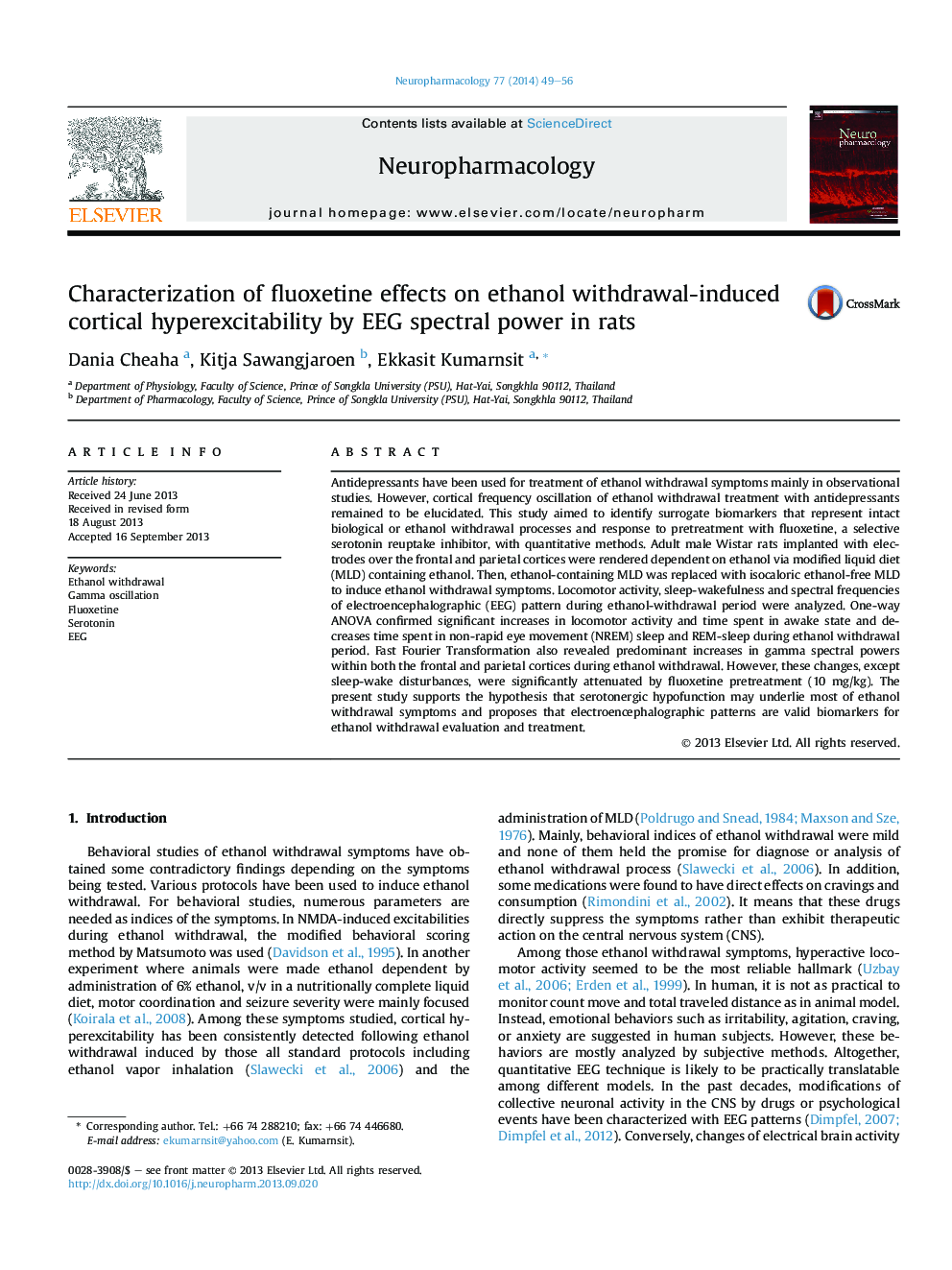| Article ID | Journal | Published Year | Pages | File Type |
|---|---|---|---|---|
| 5814844 | Neuropharmacology | 2014 | 8 Pages |
Abstract
Antidepressants have been used for treatment of ethanol withdrawal symptoms mainly in observational studies. However, cortical frequency oscillation of ethanol withdrawal treatment with antidepressants remained to be elucidated. This study aimed to identify surrogate biomarkers that represent intact biological or ethanol withdrawal processes and response to pretreatment with fluoxetine, a selective serotonin reuptake inhibitor, with quantitative methods. Adult male Wistar rats implanted with electrodes over the frontal and parietal cortices were rendered dependent on ethanol via modified liquid diet (MLD) containing ethanol. Then, ethanol-containing MLD was replaced with isocaloric ethanol-free MLD to induce ethanol withdrawal symptoms. Locomotor activity, sleep-wakefulness and spectral frequencies of electroencephalographic (EEG) pattern during ethanol-withdrawal period were analyzed. One-way ANOVA confirmed significant increases in locomotor activity and time spent in awake state and decreases time spent in non-rapid eye movement (NREM) sleep and REM-sleep during ethanol withdrawal period. Fast Fourier Transformation also revealed predominant increases in gamma spectral powers within both the frontal and parietal cortices during ethanol withdrawal. However, these changes, except sleep-wake disturbances, were significantly attenuated by fluoxetine pretreatment (10Â mg/kg). The present study supports the hypothesis that serotonergic hypofunction may underlie most of ethanol withdrawal symptoms and proposes that electroencephalographic patterns are valid biomarkers for ethanol withdrawal evaluation and treatment.
Related Topics
Life Sciences
Neuroscience
Behavioral Neuroscience
Authors
Dania Cheaha, Kitja Sawangjaroen, Ekkasit Kumarnsit,
